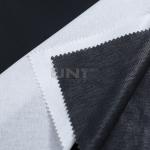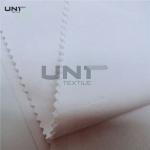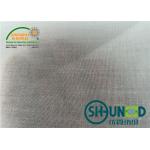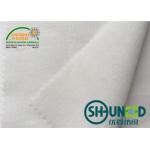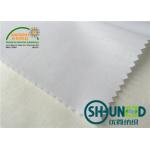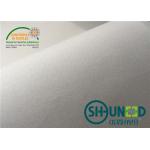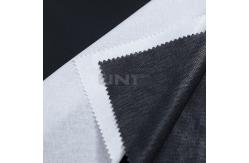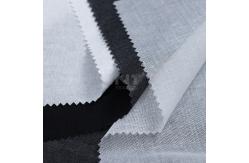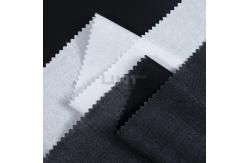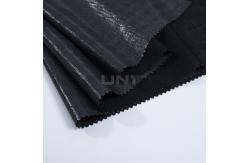Shirt interlining is a type of fabric used in the production of shirts, providing
structure, smoothness, and durability to key areas such as the
collar, cuffs, and plackets. It enhances the overall appearance and
functionality of the shirt, ensuring that these areas remain stiff
and well-formed while also contributing to the comfort and fit of
the garment. Key Features of Shirt InterliningStructure and Firmness: Shirt interlining is primarily used to provide stiffness and
structure to areas like the collar, cuffs, and front placket. This
ensures that the shirt maintains its shape and provides a neat,
crisp look. Smooth Finish: Shirt interlining helps eliminate wrinkles and creases,
contributing to a smooth, polished finish. It ensures that the
shirt looks neat even after hours of wear. Soft and Comfortable: Despite providing structural support, shirt interlining is
designed to remain soft and flexible, ensuring the shirt is
comfortable to wear. Durability: High-quality shirt interlining is designed to withstand frequent
washing and wearing, ensuring long-lasting performance without
losing its shape or effectiveness. Versatile Materials: Shirt interlining can be made from a variety of materials such as
cotton, polyester, and blends, depending on the desired finish,
feel, and function. Cotton-based interlining is common for
high-quality shirts, while synthetic blends are more durable and
resistant to wrinkles.
Types of Shirt InterliningFusible Shirt Interlining: Fusible interlining has an adhesive coating on one side that
bonds to the shirt fabric when heat is applied, typically with an
iron. It is quick and easy to apply, making it popular in mass
production settings. Non-Fusible Shirt Interlining: Non-fusible interlining is sewn into the shirt fabric rather than
bonded with heat. This method provides a more traditional and
premium finish, often preferred for high-end or bespoke shirts.
Applications of Shirt InterliningCollars: The most common application of shirt interlining is in the
collar. It ensures that the collar remains stiff and well-shaped,
contributing to the shirt’s overall neat appearance. Cuffs: Shirt interlining is also used in the cuffs to provide structure
and help them maintain their shape after multiple wears and washes. Plackets: The front placket of a shirt, where the buttons and buttonholes
are located, also benefits from interlining. It ensures that the
placket stays flat and firm, contributing to the shirt’s crisp,
tailored look. Yokes and Cuffs: Interlining may also be used in the yoke (the back part of the
shirt) and cuffs for added stability and to enhance the shirt's fit
and structure.
Benefits of Shirt InterliningShape Retention: Shirt interlining ensures that the shirt collar, cuffs, and
placket stay firm and maintain their shape throughout the day. This
contributes to the shirt's polished, professional appearance. Crisp, Neat Appearance: The interlining helps prevent the shirt from looking limp or
wrinkled, keeping it sharp and crisp. Comfortable Fit: Despite providing structure, shirt interlining is designed to be
soft and flexible, ensuring the shirt is comfortable to wear
throughout the day. Long-Lasting Durability: High-quality interlining can withstand frequent washing and
regular wear without losing its firmness or shape, making it a
durable option for both casual and formal shirts.
How Shirt Interlining is UsedCutting: The interlining is cut to fit the desired sections of the shirt,
such as the collar, cuffs, and placket. Fusing or Sewing: Fusible interlining is placed between the shirt fabric layers,
and heat is applied to bond it. Non-fusible interlining is sewn
directly into the fabric. Pressing: After applying the interlining, the shirt is pressed to ensure
that the fabric is smooth and that the interlining is properly
bonded or sewn into place.
ConclusionShirt interlining plays a crucial role in the production of
high-quality shirts, ensuring that collars, cuffs, and plackets
maintain their shape and stay crisp throughout the day. It enhances
both the structure and appearance of the shirt while ensuring
comfort for the wearer. Whether fusible or non-fusible, shirt
interlining is an essential component for tailoring a
well-structured, durable, and professional-looking shirt |
